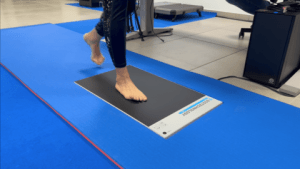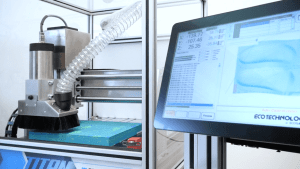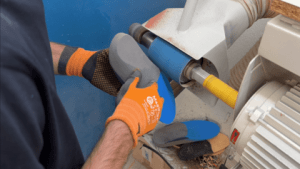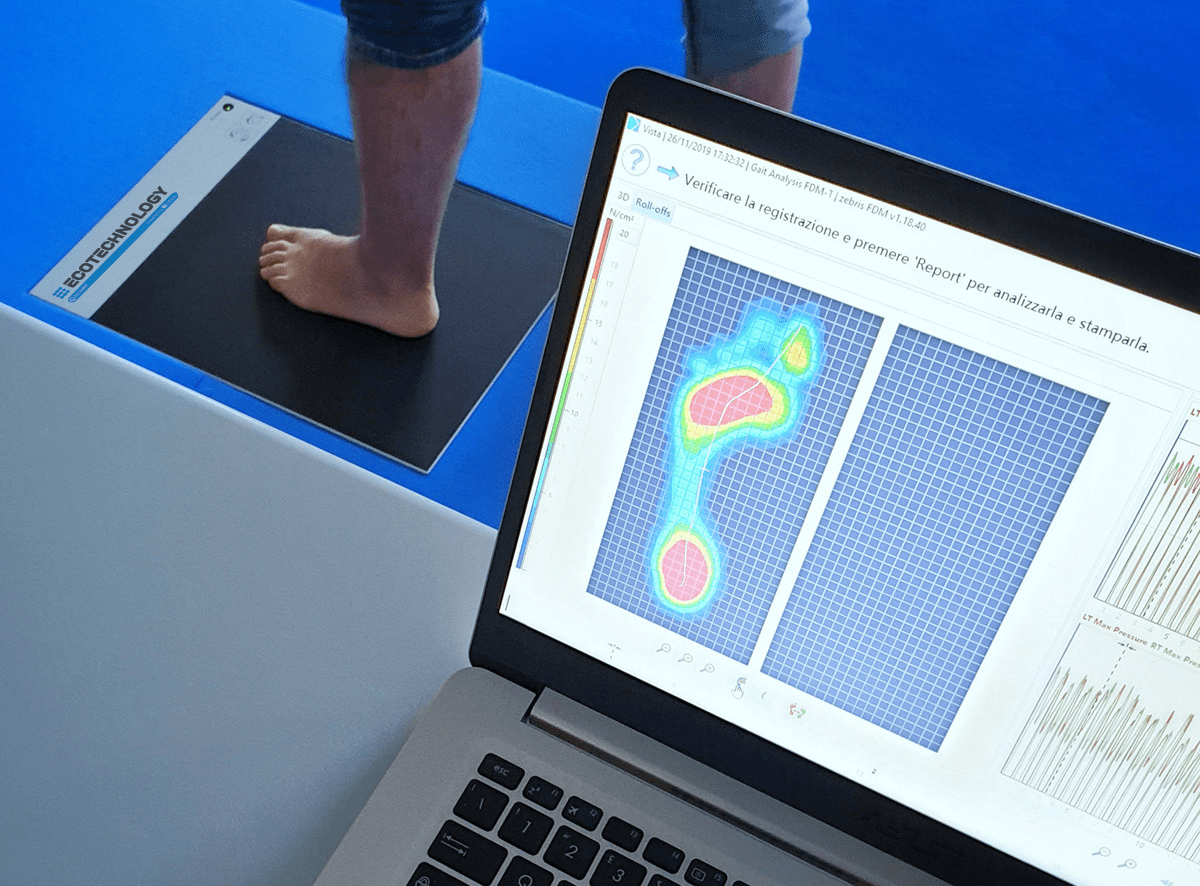By Marco Graziani
Finding out what our posture is and how we walk can be useful to understand what possibilities there are to lighten and relieve pain and discomfort, solve our problems or simply to improve our resistance in standing and walking.

The word prevention takes on a very important meaning when it comes to postural problems. Prevention is fundamental, especially in children and young people, taking on a valuable and effectively curative role when it is done through teamwork with different professionals.
In our lab it is possible to carry out the baropodometric assessment of the gait: both a static and dynamic analysis, done on our baropodometric platform that identifies pressures and barycantles for a generic postural assessment. During the visit, which lasts about 30 minutes, postural problems of all kinds can be identified to be corrected with the most suitable insoles.

Orthotics can be created for different treatments: thalalgia in the pronated flat foot and supinated cavus foot, rheumatic or diabetic foot, metatarsalgia due to overload, plantar fasciitis and to reposition any dysmetria of the lower limbs.
The design of the insole, which must be carried out exclusively by an orthopaedic technician, starts with a 3D scan and continues with the computer simulation in cadcam.
In this phase, the orthopaedic technician is already able to accurately detect any overloads and carry out the first volume processing of the insoles.
 Instantaneous interventions and corrections are possible, until the optimal value is reached, every data is reported and saved with millimetric and objective precision. Once the design is completed, the data goes to the cam cutter, which begins the processing without manual intervention of the man who is not able to replicate millimetrically what is processed by the PC; This ensures absolute precision. The man’s hand, on the other hand, will then be used to shape the external volumes of the insole according to the footwear in which they will be used.
Instantaneous interventions and corrections are possible, until the optimal value is reached, every data is reported and saved with millimetric and objective precision. Once the design is completed, the data goes to the cam cutter, which begins the processing without manual intervention of the man who is not able to replicate millimetrically what is processed by the PC; This ensures absolute precision. The man’s hand, on the other hand, will then be used to shape the external volumes of the insole according to the footwear in which they will be used.
In the most serious cases, the classic work with plaster cast is carried out.
We recommend the insertion of the insole inside a type of footwear that allows the maximum effectiveness of the corrections deriving from the customized insole. In fact, using footwear with internal spaces that do not allow the foot to lie flat on top of the insole, there is a risk of reducing the success of the corrections for which the insole was designed.
 It is a good idea to start wearing the new orthotic insole for 2/4 hours a day so that the foot and posture get used to the correction, after which once the corrections have been acquired, it is advisable to use the insoles as much as possible during the daily life of the entire week.
It is a good idea to start wearing the new orthotic insole for 2/4 hours a day so that the foot and posture get used to the correction, after which once the corrections have been acquired, it is advisable to use the insoles as much as possible during the daily life of the entire week.
If, sometimes, sporadically, for aesthetic reasons, footwear has to be worn for a few hours where the insole cannot be inserted, this does not affect the success of the treatment.
Centro Salute “Sanitaria – Ortopedia La Rocca snc” di Graziani Marco e Michele & C. Via Roma, 222 Ponte a Poppi (Ar) / Tel-Fax 0575 049031 / www.sanitarialarocca.it
